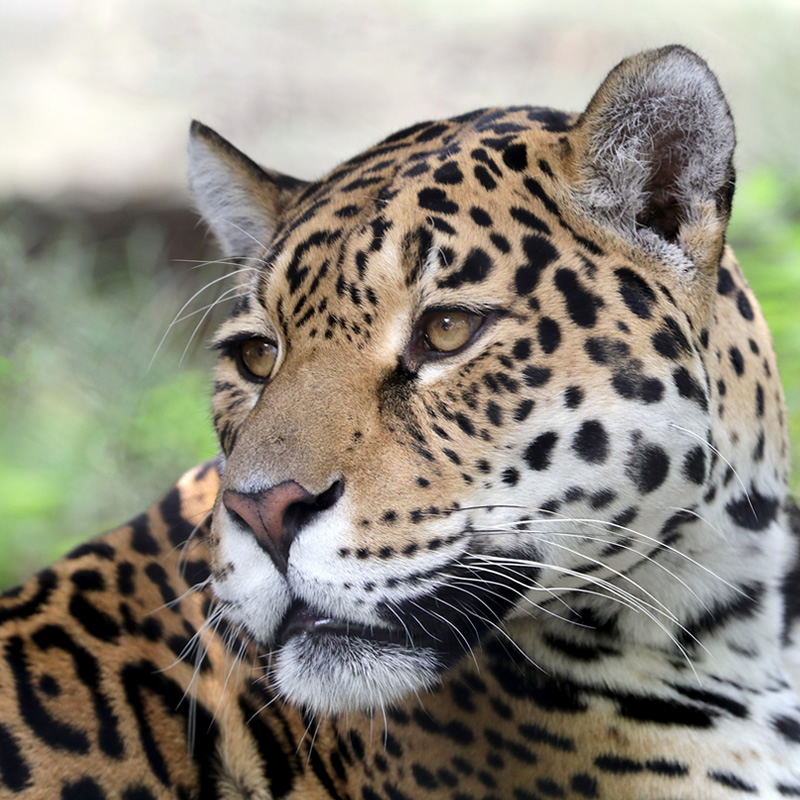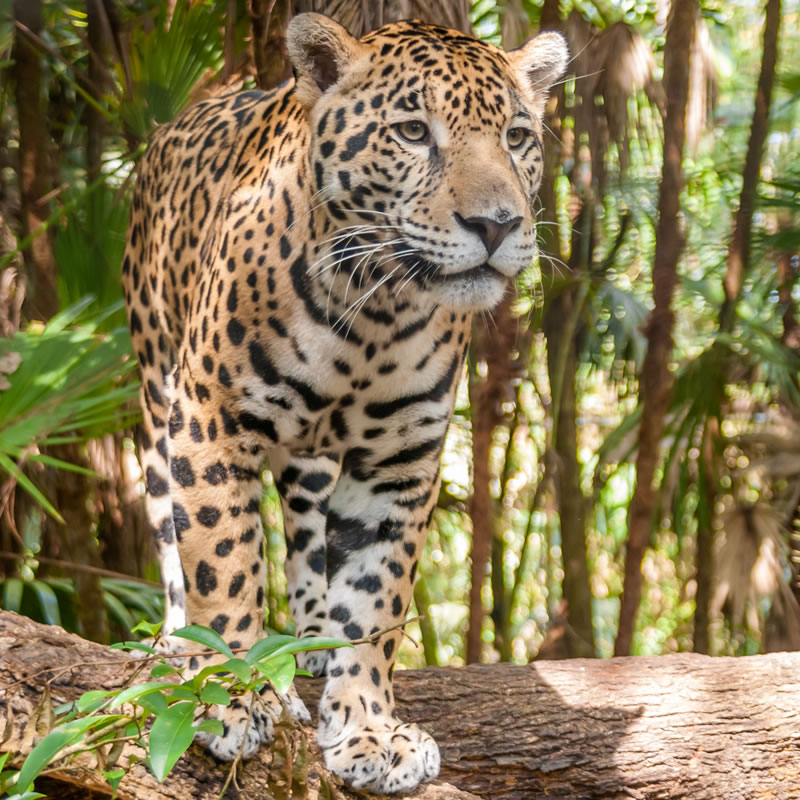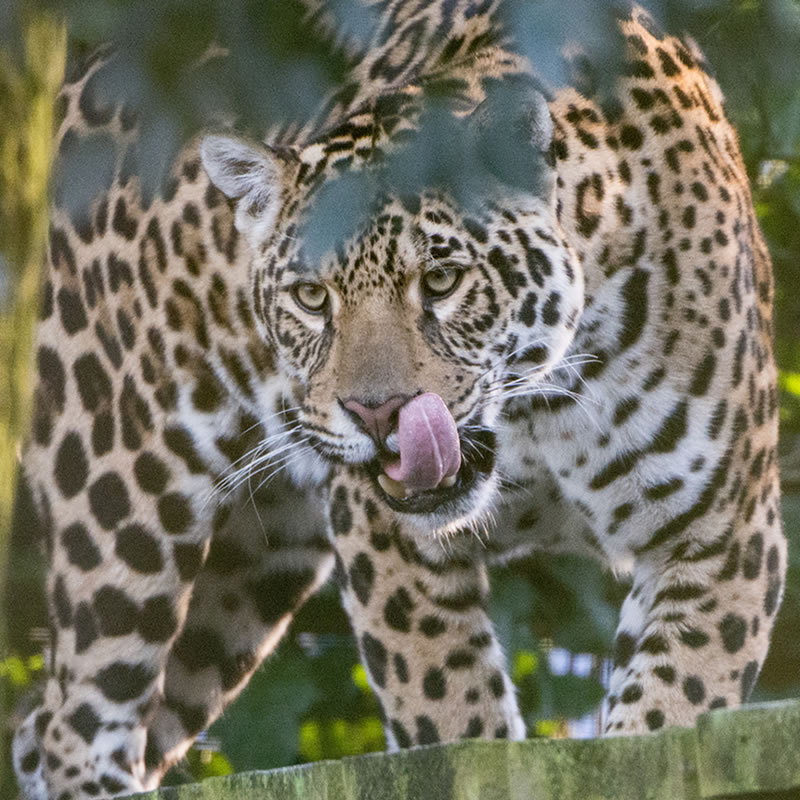
IUCN Redlist Status

Taxonomy
| Kingdom | Animalia |
| Phylum | Chordata |
| Class | Mammalia |
| Order | Carnivora |
| Family | Felidae |
| Genus | Panthera |
| Species | onca |
Located
Jaguars are found in a number of countries throughout Mexico, Central and South America.
Habitat
In these regions, they can be found in rainforests, deserts and grasslands. They are highly adaptive to different environments, when ample food and water sources are available.
Size
Jaguars are the third largest cats on Earth, and the largest big cat in the western hemisphere. They can grow to be 5.5 - 8 ft (1.68 - 2.44M) in length, and weigh anywhere from 100 to over 200 lbs (45 - 90kg).
Appearance
The most noticeable thing about these cats are their beautiful spots. The spots help them to be camoflauged as they stalk their prey.
However, these spots also allow them to be confused with their distant cousin in Africa, the leopard. The simplest way to tell leopard spots from jaguar spots is that jaguar spots have a small spot inside a larger ring, while leopard spots are just the ring with an empty center.
Jaguars are also very stocky and muscular in appearance, while leopards tend to be more slender.
Diet
These predators eat a variety of animals including turtles, capybaras, tapirs and deer. With their muscular build and sharp claws, they are even capable of eating caiman.
Reproduction
The female Jaguar's gestation period is approximately 100 days. They can give birth to 2, 3 or 4 cubs in a given litter.
More Facts about Jaguars
- Jaguars can run up to 50 miles per hour
- They can also jump 10 feet high
- The word jaguar comes from the American Indian word yaguar, which means "he who kills with one leap".
- Jaguars are able to climb trees. They might jump out of the trees to hunt other animals, or find a cozy spot in the trees to sleep.
- Sometimes people hunt jaguars too. They kill them for their beautiful fur or to keep them as a trophy.
- A very small number of jaguars are actually black. If you look closely at a black jaguar, you can still see spots in its coat.
- These big cats have excellent night vision, and do much of their hunting at night.


